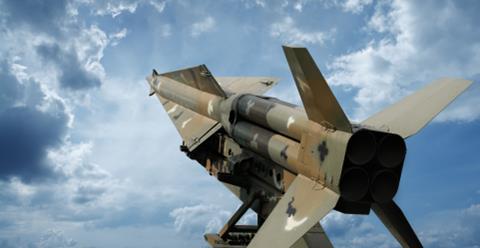Heightened global tensions form the backdrop for Aon’s political risk analysis for 2018

Political risk and threats of violence and conflict are at their highest level in a generation, according to Aon.
The risk of war – including between the world’s great powers – is at its highest since the end of the Cold War in 1991, the insurance broker has concluded in its annual Political Risk Map report.
Growing geopolitical competition –Russian and Chinese ‘revisionism’ and weak Western leadership in international diplomacy – have together contributed to increased risks of armed conflict.
“The likelihood of interstate conflict, even involving major powers, is at the highest point since the end of the Cold War,” Aon warned.
“Growing rates of polarisation over political, economic and social issues in mature democracies, and divisions between Western powers in the face of complex threats and risks, has also contributed to worsening global security and greater strategic uncertainty,” the insurance broker said.
Terrorist attacks in Western countries also doubled last year, from 96 in 2016 to 204 in 2017, Aon reported.
“A number of war zones internationally continue to serve as incubators for international terrorism, although the global threat from Islamic State (IS) seems to be waning somewhat,” said Aon.
The total number of casualties (1,092) was consistent with the previous year, meaning the lethality of attacks has fallen.
The tourism sector faces greatest risk from terror, Aon warned; the industry represents “a highly attractive target” for terrorist groups.
In 2017, there were at least 35 attacks worldwide that directly targeted commercial sectors, such as hotels and resorts, nightclubs, civil aviation, and visitor attractions.
Last year saw political risk increase in 11 countries, fed by climate change and commodity shocks weakening their fiscal positions, according to Aon.
“Political violence risks are rising globally, due to geopolitical tensions, a weakening of liberal democratic governance, and the repercussive effects of chronic conflicts around the globe,” the broking firm said.
Asian countries’ trade linkages have been shifting away from the US and toward China.
The share of Asia’s exports going to the US has dropped from 23% in 2000 to about 12% in recent years, the report noted.
Conversely, Asia’s exports to China have more than doubled in the past decade to 23%, Aon pointed out.
Developing countries are struggling to recover from the 2014 drop in commodity prices, particularly oil, exacerbating rising levels of political violence and supply chain disruption.
By Aon’s reckoning, 40% of countries are listed as being exposed to terrorism and sabotage risk; 60% of states are exposed to civil unrest risk; and a third of the world’s countries face insurrection, war or coup risk.
For the third successive year, more country risk ratings have increased than decreased, 17-6, according to the insurance intermediary.
Some 46 countries or territories are rated as high or severe risk in 2018, or 22% of the global total.
Africa experienced most stability downgrades, Aon noted; terror groups such as IS and Boko Haram are taking advantage of fragile institutions and weak borders.
The Middle East still harbours some of the highest-risk countries in the world: Iraq, Syria, Yemen and Egypt; and porous borders have allowed violence and instability to spill into neighbouring countries, undermining trade and tourism.
A shift, from the relative risk posed by non-state terrorism towards stability threats to countries and interstate tensions on the geopolitical level, is a central theme of the report.
“The long-term trend of non-state actors being the predominant political violence concern in most regions is shifting towards geopolitical risks,” said Henry Wilkinson, head of intelligence and analysis at The Risk Advisory Group, a consultancy, which collaborated with Aon on the project.
“These are more business threatening and demand board-level ownership,” continued Wilkinson.
“In such an unsettled environment, it is imperative that businesses invest in world class crisis and risk management programs that are intelligence-led, anticipatory and adaptive to rapid change,” he said.
The linkage between the trio of political risks – terrorism, political violence, and political and war risks – is emphasised by the report.
“The global geopolitical environment remains volatile,” warned Mark Parker, head of property, casualty and crisis management for the Aon Global Broking Centre.
“Given this heightened level of risk, and the rapidly evolving landscape against which businesses are operating, it is essential the companies understand their exposures and the potential for political instability to impact their people, property and supply chains,” he said.
“Ensuring that the right solutions are in place to mitigate and transfer risk is essential for firms operating internationally,” Parker added.




















No comments yet